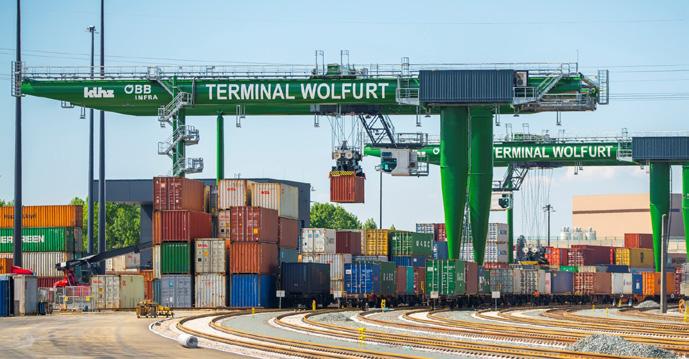
1 minute read
Künz scores highly in crane building technology and innovation
Austrian firm Künz GmbH has decades of experience in crane construction, which it uses to provide its exacting clients throughout the world with technically and qualitatively firstclass products. Whether crane systems for handling containers or rails, electrolysis cranes for zinc, copper, and nickel production or hydraulic steel equipment for constructing and renovating hydroelectric power plants, Künz has the perfect solution for every sector. Following purchase, Künz customers receive an individually tailored maintenance package. The Künz Information System (KIS) is designed for predictive maintenance. This not only enables maintenance work to be carried out efficiently in advance, but also provides important operating information to keep machinery running smoothly. OELCHECK lubricant analyses are an indispensable component of this.
At Künz, technology and innovation are systemically aimed at creating benefit for the customer. In-house design, electrical engineering, automation, and production enable rapid and focused development. Dialogue with customers is a top priority in this process. Customer service accompanies every single phase of each project – from conception and design, to maintenance and ongoing support. Künz offers products and services which fully satisfy the latest market requirements, as well as the specific demands of its customers. Decisive criteria in choosing a Künz system include reliability, service, operating costs, component service life, and maintenance outlay. Automation and digitalisation are also playing an increasingly significant role in these decisions. The already well-established Künz Crane Management System gathers data which provide the crane operator with current operational information about the system, together with any error reports or maintenance notifications. Since 2000, Künz has been supplying automated stacking cranes. These operate in large container terminals, for example, such as those found at the ports of Rotterdam and Hamburg. Here the containers are relocated automatically within zones which are off limits to employees. Automation of these systems is a far greater challenge when personnel need to be able to operate in direct proximity to them. This is the case in railway cargo terminals, for exam -




